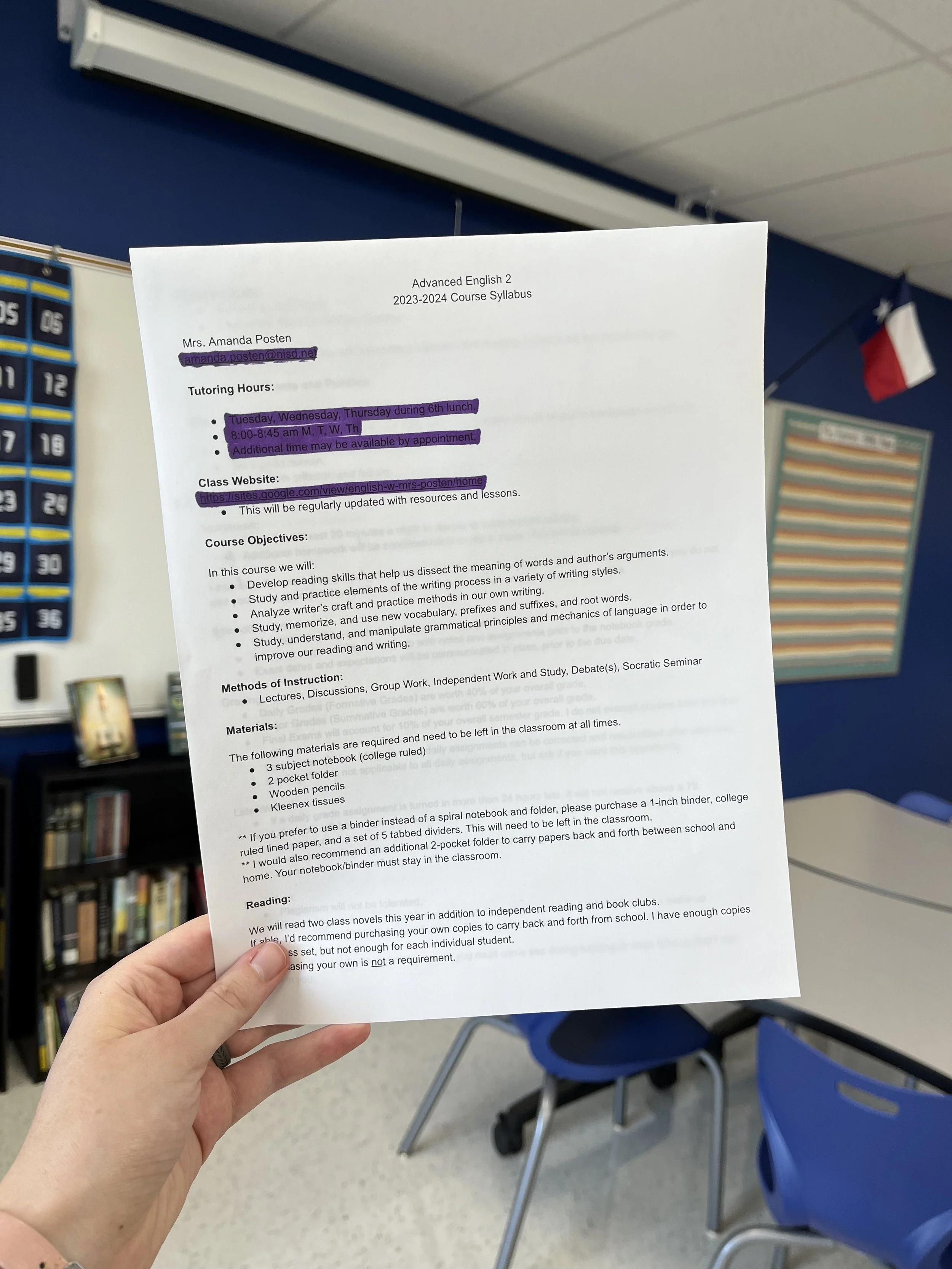Why You Should Craft a Detailed Syllabus for High School Students
When I think back to the first days of each college class, I remember the syllabus. After that initial wave of information (and a moment of panic) we were set for the semester. We knew our due dates and understood our expectations. We had an idea of what each class intended to teach us, and we were able to set ourselves up for success.
Why wouldn’t we want to set our high school students up for success?
By creating a detailed syllabus, we not only sort out our expectations for the class, but we convey them to our students. Before that paper even meets their eyes, we teachers have had to dissect what is important about what we teach, identify the key measures of success, and define it.
In years past, I have gone over a syllabus–of sorts. It contained a few details like how to get ahold of me, when tutoring hours were, how to find absent work, and what materials were needed each day. And every year I’ve reminded students of those same things on a weekly, if not daily, basis.
The information didn’t stick because I didn’t make my students responsible for it. I wasn’t giving them the opportunity to learn responsibility and independence.
Not only was the simple stuff not sticking with them, but I realized there was so much being left unsaid about my class. What was our big objective? What was my goal for them? What would we spend our time doing?
The biggest problem for me was when I realized I didn’t always have a clear answer to those questions because I’d never taken the time to break down my course and clarify what it should entail.
So, this year I wrote a detailed syllabus. I broke it down in sections, poured over the words, and struggled to craft my overall objective.
Once I got it all out on the page, I felt a literal adrenaline rush.
I felt like the hard part of my job was over. I will no longer wonder “What is the point of this class?” and “Is this really necessary?” because it either aligns with my course objectives or it doesn’t.
I set the bar and I can’t wait to meet it.
I want you to feel that same rush and excitement for your class this year by helping you prepare with a detailed syllabus.
Before crafting my own, I researched what is usually included in a comprehensive syllabus and found lots of great resources and checklists. Many of them suggested things that weren’t quite relevant to our high school kids or my current teaching situation, so I adapted. Below is a list of topics I included in my syllabus, as well as a few extra that didn’t fit my needs but might fit yours.
Syllabus Checklist
Basic Information
Teacher Name and Contact Information
Tutoring/Office Hours
Web Page URL or any important links for the class
Course Descriptions
Prerequisites
Course Overview
Purpose
General Topics of Focus
Why take this course? (I used this to think through my purpose.)
Student Learning Objectives
Methods of Instruction
Lectures? Discussion? Group work? Independent study?
Materials
Primary books and readings
Supplemental reading
Other materials?
Requirements
Exams and Quizzes
Homework
Other assignment types and due dates
Policies
Grading procedures
Attendance and tardy procedures
Class participation expectations
Behavior decorum
Extra credit
Missed / Late assignments
Plagiarism
Reporting Family emergencies
What to do in case of an emergency at school (lock down, tornado, fire, etc.)
Schedule
Tentative Calendar
Firm due dates
Special Events
Resources
Tips for success
Links to materials
Disclaimer
This syllabus is subject to change. Any changes will be communicated with you via…
Now what?
Teachers have a great opportunity to help students practice independence and responsibility. I intend to take advantage of this and use the syllabus as a way to begin fostering these skills from the very start.
I set the bar high and created expectations not only for myself, but for my students. I know going into this year that there is work to do, and I have something I can refer back to when I feel lost or off track. But most importantly, I know what my class is about and I can convey that clearly. And because I have done the work, I can give my students responsibility for their own learning.
Don’t wait another minute! Start drafting a syllabus right away. Take your course down to the nitty gritty and make sure you are the real expert. Don’t wing it when you can set the tone for yourself and your students before the school year begins.
Happy teaching!
